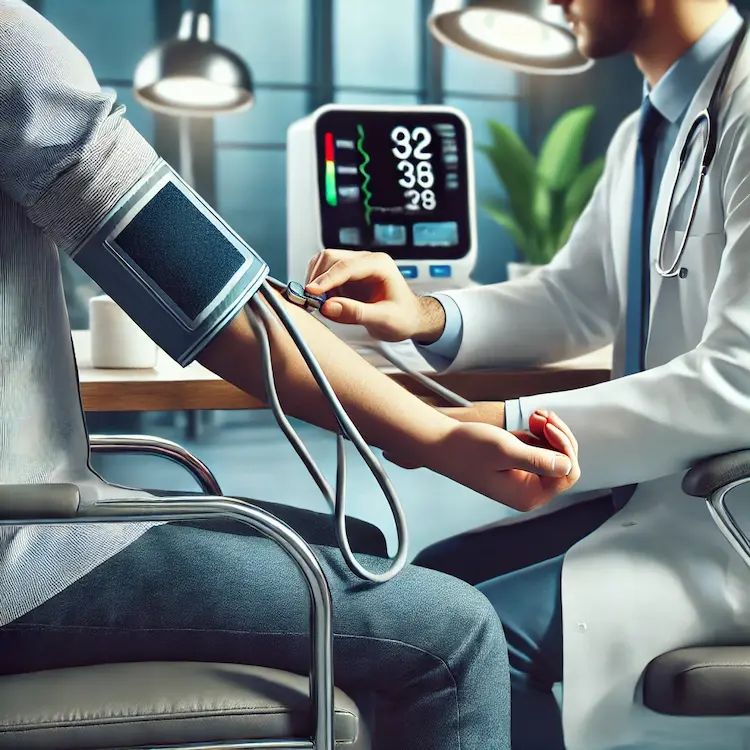Ambulatory Blood Pressure Monitoring (ABPM) is a revolutionary method for measuring blood pressure outside of a clinical setting. It provides more accurate and reliable data by monitoring blood pressure over a 24-hour period while the patient goes about their daily activities. This article breaks down the details of ABPM, including its importance, the tools used, and how it compares to traditional methods of measuring blood pressure. We’ll also look at the benefits of ABPM, how it impacts health, and practical advice for both healthcare professionals and patients.
What is Ambulatory Blood Pressure Monitoring (ABPM)?
Ambulatory Blood Pressure Monitoring (ABPM) involves wearing a blood pressure cuff for 24 hours that automatically takes measurements at regular intervals. Unlike traditional blood pressure checks done in a healthcare setting, ABPM provides a comprehensive view of how blood pressure fluctuates throughout the day and night, giving a much more accurate and holistic picture of a patient’s cardiovascular health.
Importance of ABPM in Diagnosing Hypertension
Hypertension, or high blood pressure, is often referred to as the “silent killer” because it may not show symptoms until it causes significant damage to the heart and arteries. ABPM plays a vital role in diagnosing and managing hypertension because:
- Improved accuracy: It helps overcome “white coat syndrome,” where patients’ blood pressure readings are elevated in a medical office due to stress.
- Understanding fluctuations: ABPM records the blood pressure over an extended period, capturing fluctuations that can be missed during a single, in-office measurement.
- 24-hour profile: This offers valuable insights into daytime and nighttime blood pressure levels, which are critical for assessing cardiovascular risk and treatment effectiveness.

How ABPM Works
ABPM devices are portable and typically consist of an inflatable cuff, a small monitor, and a data recorder. Here’s how it works:
- Wearing the device: The patient wears the cuff around their arm, and it automatically inflates at regular intervals—usually every 15 to 30 minutes during the day and every 30 to 60 minutes during sleep.
- Data collection: Each reading is recorded and stored in the device, which is later analyzed by healthcare professionals to evaluate the patterns and trends in blood pressure readings.
- Analysis: The data helps healthcare providers determine whether the patient has sustained high blood pressure, normal variations, or nighttime dipping—a pattern where blood pressure naturally falls during sleep.
Key Benefits of ABPM
- 24/7 monitoring: By monitoring blood pressure during both day and night, ABPM gives a complete view of how blood pressure behaves throughout the day.
- Diagnostic tool: ABPM is used to confirm the diagnosis of hypertension, especially in borderline cases or those with inconsistent readings in a clinic.
- Better risk assessment: It helps healthcare professionals assess a patient’s cardiovascular risk more accurately, potentially leading to early intervention and better outcomes.
- Personalized treatment: Doctors can tailor treatment plans based on ABPM results, ensuring the most effective approach to managing blood pressure.
Different Methods of Measuring Blood Pressure
ABPM is just one method for measuring blood pressure. Here’s how it compares to other common methods:
- Office Blood Pressure Measurement: The standard method in a clinical setting. While convenient, it can be inaccurate due to white coat syndrome or stress-induced high readings.
- Home Blood Pressure Monitoring (HBPM): Involves the patient measuring their blood pressure at home. While it offers more accurate readings than office measurements, it doesn’t provide the continuous 24-hour data that ABPM does.
- ABPM: The gold standard for accurate and comprehensive blood pressure monitoring, providing data that can detect conditions like nocturnal hypertension, masked hypertension, or isolated office hypertension.

Tools and Devices for ABPM
Several tools and devices are used in ABPM, each with its own features. Some of the most common devices include:
- Omron BP760N: A popular device for at-home and ambulatory monitoring. It is user-friendly and can track both systolic and diastolic pressure, as well as pulse rate.
- Welch Allyn ABPM 6100: A clinical-grade tool used for continuous monitoring. It’s known for its durability and accurate readings.
- SunTech Medical ABPM: Known for its precision and adaptability, SunTech devices are widely used in healthcare settings for extended monitoring periods.
How to Prepare for ABPM
Here are some practical tips for patients preparing for an ABPM test:
- Wear loose clothing: The cuff needs to fit comfortably, so wearing loose clothing will help the device function properly.
- Avoid excessive movements: Though the device is designed for normal activity, it’s recommended to avoid strenuous exercise or activities that might affect the cuff’s positioning.
- Keep a diary: Record activities, meals, and medications during the monitoring period to provide context for the results.
Interpreting ABPM Results
Once the data is collected, the healthcare provider will analyze the ABPM results. Key metrics include:
- Daytime Average Blood Pressure: A high average reading during the day may indicate the need for treatment.
- Nighttime Average Blood Pressure: This is often lower than daytime readings. Lack of nighttime dipping may be a sign of increased cardiovascular risk.
- 24-hour Average Blood Pressure: The overall average can provide insight into the patient’s hypertension status and treatment response.
Risks and Limitations of ABPM
Though ABPM offers numerous benefits, there are some risks and limitations to consider:
- Discomfort: Some patients may find wearing the cuff for 24 hours uncomfortable, especially during sleep.
- Inaccurate readings: External factors such as cuff displacement or movement can affect the accuracy of the readings.
- Limited by patient compliance: The patient’s ability to wear the device consistently throughout the 24-hour period is essential for accurate results.
Societal and Health Impacts of ABPM
ABPM has a significant impact on both individual health outcomes and broader healthcare systems. Early detection of hypertension through ABPM leads to:
- Reduced healthcare costs: By diagnosing hypertension earlier, ABPM can help prevent costly complications like stroke, heart failure, and kidney disease.
- Improved quality of life: By providing more accurate treatment plans, ABPM helps individuals manage their blood pressure better and avoid potential complications.
Conclusion
Ambulatory Blood Pressure Monitoring (ABPM) is an essential tool for diagnosing and managing hypertension, offering more accurate insights into an individual’s cardiovascular health than traditional office measurements. By providing 24-hour monitoring, ABPM can identify patterns that are otherwise missed, helping healthcare professionals make more informed decisions regarding treatment. While it may have some limitations, its benefits far outweigh the drawbacks.
For both healthcare providers and patients, understanding ABPM and its role in blood pressure management is crucial for ensuring long-term health and preventing serious cardiovascular conditions.


